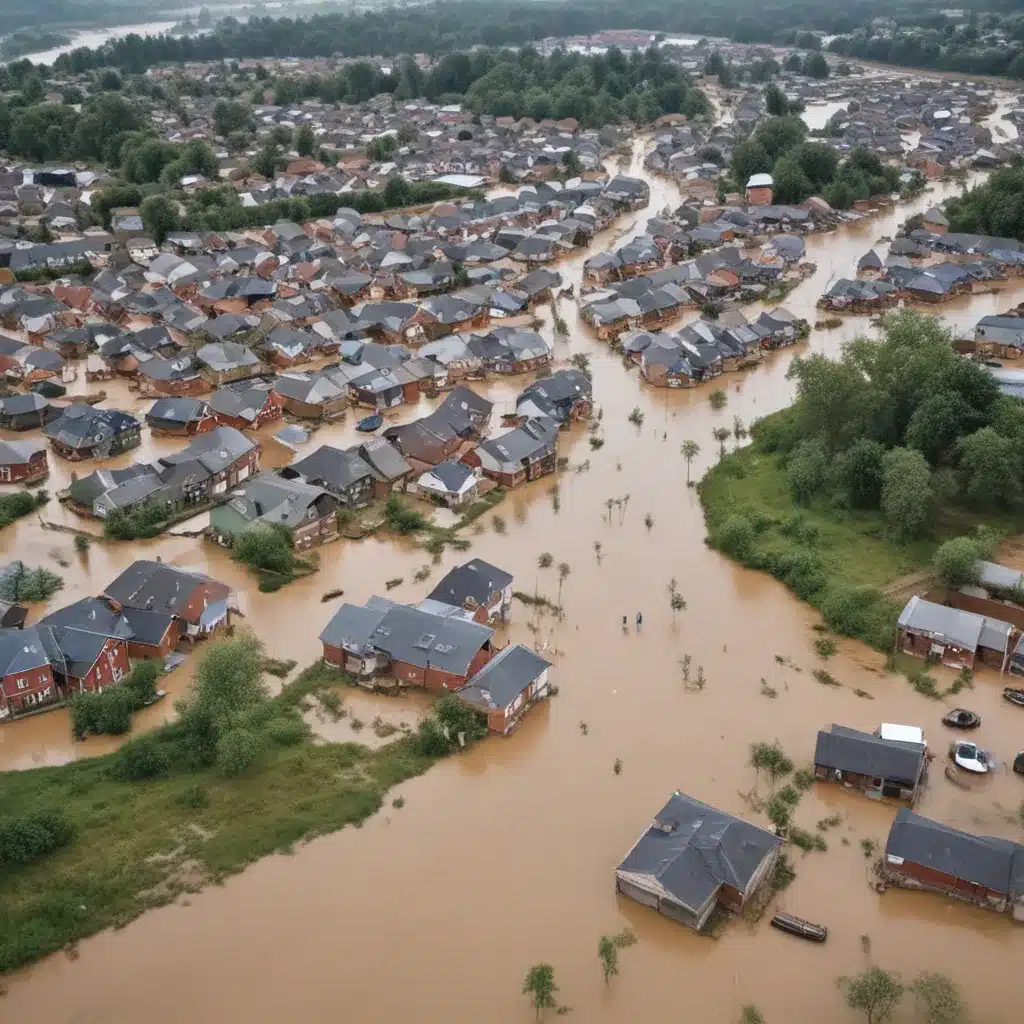
As an experienced flood control specialist, I’ve witnessed firsthand the critical role that individual and community actions play in building resilience against the growing threat of floods. While traditional structural measures like levees and drainage systems are essential, we’re now recognizing the immense power of behaviour change to complement these physical interventions and drive long-term, sustainable flood risk reduction.
Now, this might seem counterintuitive…
Across the globe, communities are increasingly confronting the devastating impacts of floods, from destroyed homes and infrastructure to disrupted livelihoods and public health crises. In many low- and middle-income countries, the situation is particularly dire, with rapid urbanization, limited resources, and weak governance compounding the challenges. This is why harnessing the collective actions of citizens is not only desirable, but a necessity.
Empowering Household-level Adaptation
At the household level, there is a wealth of adaptation strategies that can significantly reduce flood risk. These include elevating homes, protecting valuables, installing green infrastructure, and using early warning systems. However, our research in Tamale, Ghana has revealed that the uptake of these citizen-led interventions is far from uniform, with major disparities across different demographic groups.
The key to unlocking this potential lies in understanding the barriers that prevent households from adopting these life-saving measures. Our survey of 286 households in Tamale showed that the primary obstacles were not a lack of motivation or willingness, but rather limited access, knowledge, and networks.
For instance, while over 60% of households reported already protecting their valuables, a significant proportion cited a lack of access or the high cost as barriers. Similarly, flood education – a critical enabler of other behavioural adaptations – was hindered by poor awareness and limited availability in many communities.
Importantly, these barriers were not equally experienced by all households. Factors such as income, household size, and previous exposure to flooding played a pivotal role in determining the specific challenges faced. Poorer households and those with fewer members were more likely to be constrained by resource limitations, while longer-term residents struggled with entrenched social norms and limited networks.
These insights underscore the importance of tailoring interventions to the unique characteristics and needs of different groups. A one-size-fits-all approach is unlikely to succeed; instead, we might want to identify and address the context-specific hurdles that impede flood adaptation at the household level.
Fostering Community-driven Resilience
Beyond the household, community-level action is equally vital for building comprehensive flood resilience. Our work in Tamale has shown the power of collective planning, social learning, and shared resource mobilization in driving flood risk reduction.
For example, communities that have collaborated to map evacuation routes, establish emergency supply caches, and coordinate early warning systems have demonstrated significantly higher levels of preparedness and response capacity. These community-based initiatives not only enhance physical readiness, but also cultivate a culture of collective responsibility and solidarity – a critical foundation for long-term resilience.
Nonetheless, barriers to community-driven adaptation also persist. Lack of access to technical expertise, financial resources, and decision-making power can hinder the ability of local groups to design and implement effective solutions. Furthermore, entrenched power dynamics and social divisions within communities can undermine the equitable distribution of adaptation benefits.
To address these challenges, we might want to embrace a participatory, co-production approach that empowers communities as equal partners in the resilience-building process. This involves facilitating inclusive dialogues, providing technical and financial support, and fostering collaborative governance structures that give citizens a genuine voice in adaptation planning and implementation.
Mainstreaming Behaviour Change for Flood Resilience
Ultimately, the path to flood resilience lies in the harmonious integration of structural, technological, and behavioural interventions. While hard infrastructure like levees and drainage systems remain essential, their effectiveness is amplified when coupled with proactive individual and community actions.
This is where behaviour change becomes a game-changer. By targeting the psychological, social, and institutional factors that shape human decisions and actions, we can cultivate a culture of flood preparedness, risk awareness, and collective responsibility – one that endures long after the latest flood has receded.
Key to this is mainstreaming flood resilience into the everyday lives and decision-making processes of citizens. This may involve:
- Embedding flood risk education into school curricula and community outreach programmes
- Incentivizing household-level adaptation through subsidies, insurance schemes, or recognition programmes
- Strengthening social networks and community cohesion to foster collaborative resilience-building
- Empowering local leaders and champions to drive behaviour change within their communities
By weaving flood resilience into the fabric of our cities and neighbourhoods, we can cultivate a self-sustaining, adaptive ecosystem that is better equipped to withstand the growing threats posed by climate change.
The Path Forward: Integrating Citizen-led Adaptation
As a flood control specialist, I’ve witnessed the remarkable potential of citizen-led adaptation, but also the persistent barriers that limit its widespread adoption. The solution lies in a multi-pronged approach that harnesses the power of behaviour change to complement traditional structural interventions and drive long-term, equitable flood resilience.
This means deeply understanding the unique needs and barriers faced by different households and communities, and tailoring our support accordingly. It requires empowering citizens as equal partners in the resilience-building process, fostering inclusive dialogue, and mobilizing the necessary resources and networks.
Most importantly, it demands that we mainstream flood resilience into the very fabric of our societies – from education and social norms to economic incentives and governance structures. By doing so, we can unlock the collective power of individuals and communities to safeguard their homes, livelihoods, and futures against the mounting threat of floods.
The time to act is now. By embracing behaviour change as a central pillar of our flood control strategies, we can create a more flood-resilient world – one household and community at a time. I encourage you to visit Flood Control 2015 to explore the latest innovations, policies, and case studies in this vital domain.
Example: Manchester Advanced Flood Control Project 2024















